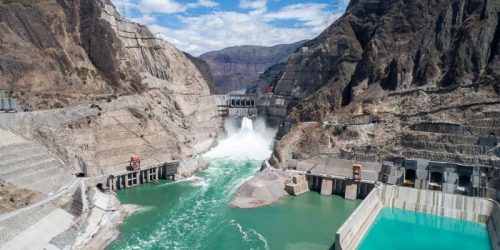It’s the beginning of the end for the era of mega-dam building in China.
China Three Gorges Corp. last week turned on the first set of generators at the massive Wrongdoer hydro power plant, deep in the mountains of Yunnan province. About 170 kilometers (106 miles) downstream on the Jinsha River sits Tibetan, the last of its kind, scheduled to go into operation next year.
At full run, the two sites will produce more electricity than every power plant in the Philippines combined. They’re the final two mega-dams in a Chinese construction boom that goes back more than half a century, one that became increasingly mired in controversy over the trade-off between the benefits of the renewable energy and flood prevention and the social and environmental costs.
It’s the beginning of the end for the era of mega-dam building in China.
China Three Gorges Corp. last week turned on the first set of generators at the massive Wudongde hydropower plant, deep in the mountains of Yunnan province. About 170 kilometers (106 miles) downstream on the Jinsha River sits Baihetan, the last of its kind, scheduled to go into operation next year.
Now, China’s hydro industry is down-shifting toward smaller projects and pumped storage. Engineers have run out of the easiest locations to power massive sets of turbines and the falling cost of rival energy sources such as solar mean it isn’t worth moving on to more challenging locations.
“It’s so cheap developing renewables and coal-fired power, why bother injecting huge sums of money to develop hydro 2,000 kilometers deep in the Tibetan plateau,” said Frank Yu, an analyst with Wood Mackenzie Ltd. “The future of hydro is going to be pumped storage and is also going to be smaller and smaller.”
China’s dam-building era began in the 1950s, soon after the Communist Party gained power, but it reached a crescendo in the past two decades. After Baihetan gears up to full capacity in late 2022, China will have completed five of the world’s 10-biggest hydropower plants in just 10 years. China’s dams generated more electricity in 2017 than the total supply of every other country in the world besides the U.S. and India.





